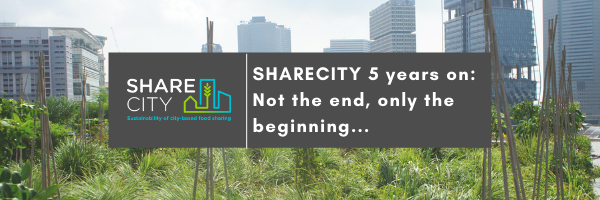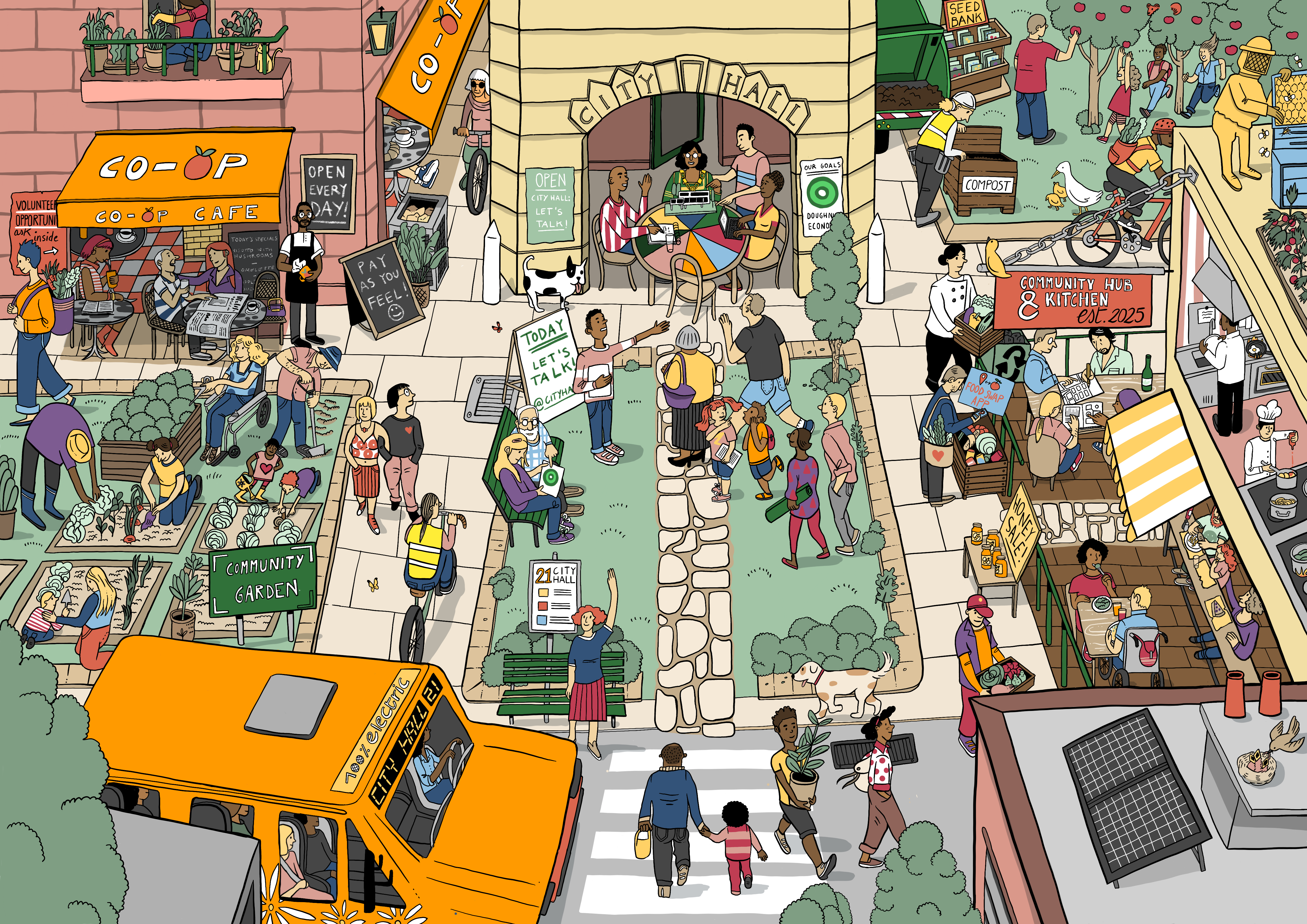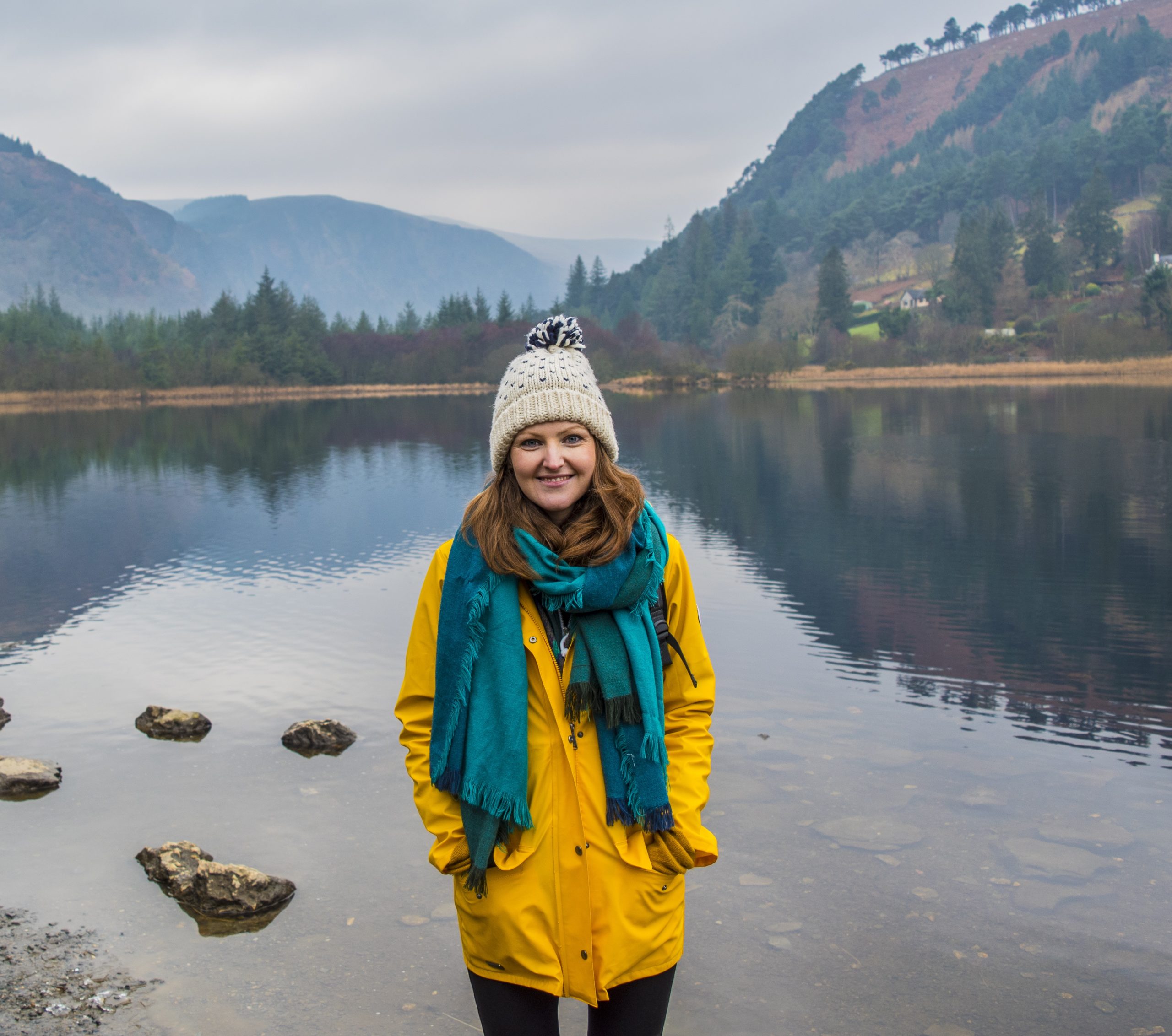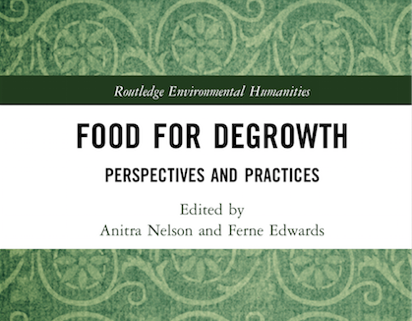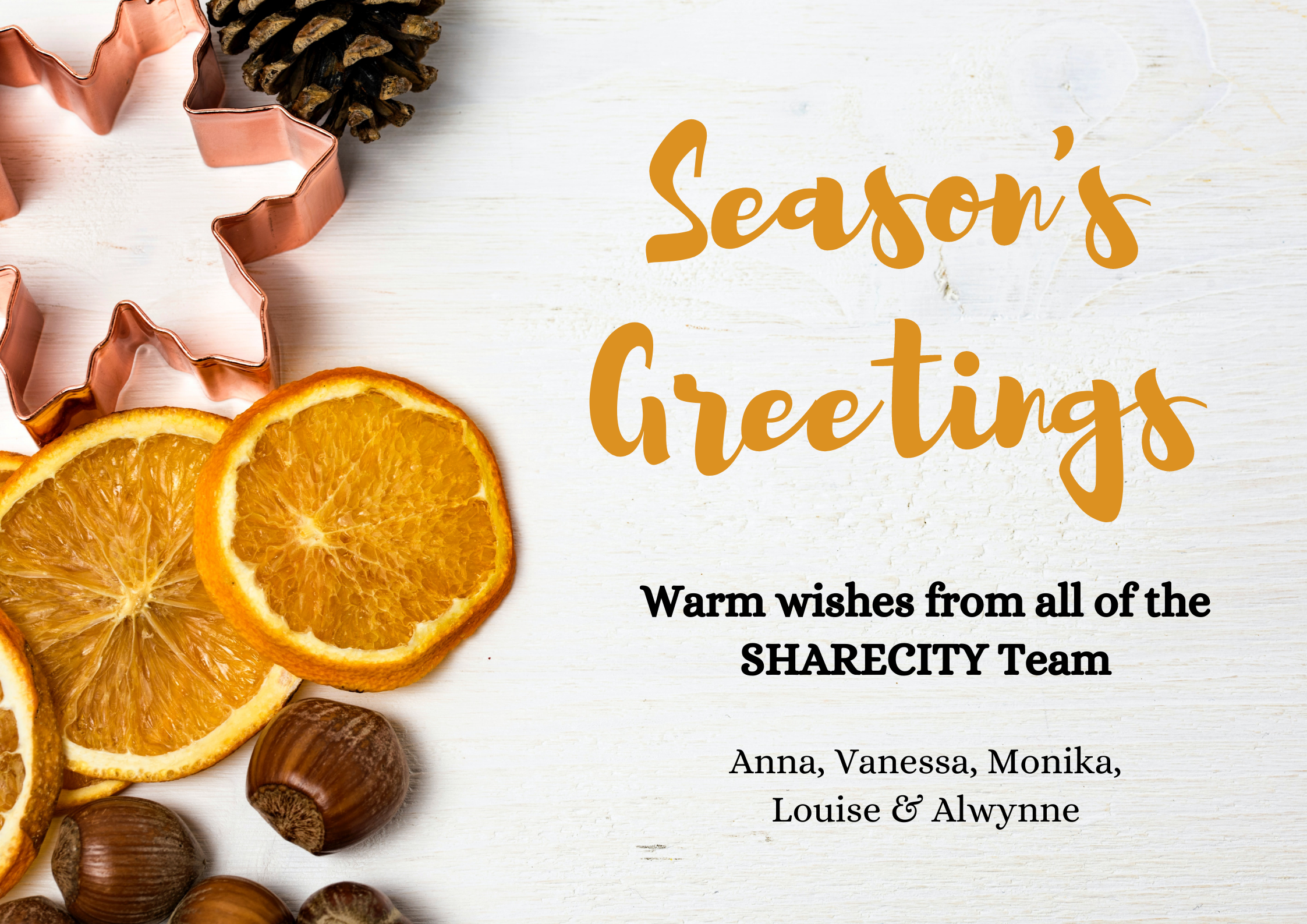SHARECITY100: Exploring Food Sharing in 100 Cities
Published by SHARECITY on the 17th November 2016.
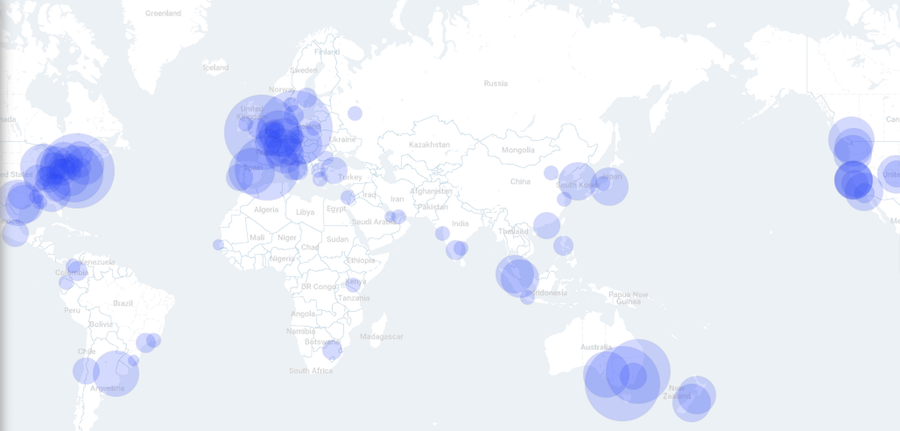
This post initially appeared on SHAREABLE on 15/10/2016
SHARECITY100: Exploring Food Sharing in 100 Cities
SHARECITY100 is a database of more than 4000 food sharing enterprises across 100 cities around the world, including Asia, Africa, Australia, North and South America, and Europe. The first major output of SHARECITY, a five-year research project at Trinity College Dublin, SHARECITY100 was created to assess the practice and sustainability potential of information and communications technology (ICT)-enabled food sharing within cities.
Enterprises are coded by what is shared, including foodstuff, skills and spaces, and how it is shared e.g. collecting, gifting, bartering or selling. The database is open-access and searchable meaning people can choose to search by cities, by what is shared, by how it is shared or by all three criteria, narrowing down searches to find precisely what kind of sharing they would like to know more about. Shareable and the Shareable community helped us by identifying potential sharing organisations that the research team could explore and code for the database. We are very grateful for this input.
The motivation for creating SHARECITY100 was to make visible the landscape of food sharing in cities by mapping it consistently across a large number of cities. This helps demonstrate that the creative and innovative actions of individual enterprises are not isolated experiments, but part of a burgeoning movement to reconfigure urban food systems.
The SHARECITY100 database has multiple functions:
- Help citizens find out where they can share food, grow and cook food together or even to share skills and experiences around food
- Help connect sharing activities across the globe, facilitating learning about sharing, particularly around the challenges and opportunities to move towards more sustainable urban development
- Inspire budding food sharers to establish enterprises in their own cities
The high level findings from the database are fascinating as they indicate the diversity of actions and the multifunctionality of many sharing activities. It is not unusual, for example, for individual enterprises to share food, spaces and skills and for that sharing to take place through multiple modes, perhaps gifting and bartering, or gifting and selling.
Linked to this, there are enterprises which have both for-profit and not-for-profit parts of their organisation in order to meet their goals. The tables below give some indication of the overall findings when reading the global landscape of urban food sharing.
The top cities in terms of number of sharing enterprises are London, which came out as the top ranked city with 198 food sharing enterprises identified. This was followed by New York City (188), Melbourne (144), Berlin (137) and Sydney (108). Porto Alegre (4), Doha (5) and Dakar (6) came out at the bottom of the database ranking.
In terms of what is shared, the Knowledge and Skills category of food sharing was found to be the most frequently identified service across the 4028 initiatives, being shared by over half of all enterprises (53.5%). This was followed by Meals (35.3%) and Fruits and Vegetables (31.7%). The Meat and Fish category was the least likely to be shared (4.3%) just below Compost (5.6%).
Overall, 70% of all enterprises shared more than one food category. For example, Nomadic Community Gardens in London shared Knowledge & Skills, Fruit & Vegetables, Compost, Tool, and Land. So, while 53.5% of enterprises share knowledge and skills, only 16 % of all enterprises share only knowledge and skills.

In terms of how sharing occurs, gifting was found to be the most common mode of sharing with 59.2% of all enterprises sharing via gifting. This was followed by selling (for profit and not-for-profit) (42.3%), collecting (10.4%) and least commonly of all, bartering (8.3%).
As with what is shared, albeit to a lesser degree, one enterprise may utilise more than one mode of sharing across its operations. Overall, we found that 21% of all enterprises shared via multiple modes. The most common combination found was gifting and collecting with 14% of all enterprises simultaneously engaging in both. Many of these enterprises comprise community gardens, gleaners and food rescue organisations which collect food from farms, gardens and retailers and then gift it to charities or people in need.

All food sharing initiatives recorded in the database were required to have an active ICT component that enabled, enhanced or supported their food sharing activities in some way. One of the goals of this database was to explore the level of ICT use across enterprises. The graphic below indicates the number of enterprises that had various ICT components. The results show 88.8% of all enterprises had an official web page, just over half (55.1%) had a Facebook page and just over a third (34.7%) had a Twitter account. Unsurprisingly, given the resources and skills required to develop and roll-out app technology, only 8.7% of food sharing initiatives used a mobile app as part of their activities.

To illustrate the impacts of sharing, enterprises were coded according to the benefits that arise from their activities. At this stage of the research this can only be identified through the benefits that are claimed in the online materials, images, and texts that are available through enterprise’s website, Twitter, Facebook, or app. For example, economic benefits were recorded when the enterprise identifies opportunities for additional income generation through the sharing of skills, experiences, spaces and food stuff, or where the potential for income savings were created via the provision of foods for free or at reduce cost, or through the avoidance of costs normally incurred when disposing of food waste to landfill.
Similarly, social benefits were recorded when claims were made to support the development of additional community relations and interactions, or enhanced community capacity, improved health, or social well-being.
Environmental benefits were recorded when enterprises claimed their activities sought to reduce food waste, produce local food thus reducing impacts from transporting food, or produce food (or food related products) in ways which are low in terms of resource intensity.
Overall, 78% of enterprises claimed some form of economic benefit, 76% claimed social benefits and 61% claimed environmental benefits. Just over a third (34%) of enterprises claimed all three benefits.

How to Use the Database
SHARECITY100 houses information for over 4000 ICT enabled food sharing initiatives. To enable users to explore the database, we created a map to locate these sharing activities at the city level. We’ve provided filters so you can search by City, What is Shared, and How it is Shared to discover activities in our selected 100 cities around the world.
The mapping platform is designed to be a user-friendly way for anyone interested in food sharing to explore activities around the world. There are a number of ways for you to interact with the database and find out what is going on in one city or across the globe.
A simple way to use the platform is to explore the map directly using a mouse. Each city we researched is represented by a circle, the size of which is related to the number of initiatives located there. Hover over a circle to see what city it represents, and how many activities match your search. In the example below the selected city is Mexico City and it has 33 food sharing enterprises. Click on the city name to bring up the results for that city. This list is shown below the map so scroll down to learn more about these activities.

In addition to exploring the map directly, it is also possible to use the search bars to find particular types of food sharing initiatives in specific places. You can select a city, organized by world region, from the dropdown list. Alternatively, choose All to see the results for all 100 cities around the world. You can also filter by What is Shared and/or How it is Shared to narrow the results and search for specific kinds of food sharing activities.

As the vocabulary of food sharing differs from country to country we have created generic categories. For example, if you are interested in finding:
- Urban gardens, filter by Land and What is Shared
- Food swaps, filter by Bartering in How it is Shared
- Supper clubs, filter by Eating Together in What is Shared
- Food banks and pantries, filter by Gifting in How it is Shared
- Foraging, filter by Collecting in How it is Shared
Scroll down to see the results of your search below the map. The icons listed for each entry provide a snapshot of what each enterprise shares, how they share it, and how they are organized. Many initiatives are multifunctional. This means that they involve sharing a number of food related stuff, skills and/or spaces, sometimes through multiple modes of sharing. In Melbourne, for example, Ashford College Permaculture Food Garden shares food, land and knowledge/skills through gifting and bartering.
For more information about enterprises click on the URL, Facebook or Twitter media icons beneath the name of the enterprise and this will take you to their homepage of the relevant ICT.
Limitations
As the first foray into mapping the landscape of food sharing internationally we have had to make decisions about what to include and not include in the database and how to categorise and classify different and often dynamic activities. As such, we see SHARECITY100 as a snapshot that will evolve throughout the project.
The global scope of the project means that over 23 languages were represented across the 100 selected cities. In addition to the research team’s linguistic skills, we also recruited volunteers with specific language abilities to help us search in native languages. We also reached out through networks, colleagues and the enterprises themselves to inform us of food sharing activities in their areas.
Food sharing is a dynamic arena; we appreciate that some enterprises have been missed, others have ceased operations, and still others are newly emerging. We very much welcome feedback and suggestions for updates. While resources are not available to replicate the entire data collection process again, we will aim to revise the database based on information from users twice a year until 2020.
We would like to say a special thank you to everyone who helped us build content for this database, in particular: Ellen Von Holstein, Birim Mor, Laura Martins, Hounaida Abi, Haidar, Shan Jiang, Yuki Blakeney, Hyunwook Choo, Vangelis. Their help and language expertise helped us build a more accurate map of global food sharing.
Article authored by Anna Davies, Chair of Geography, Environment and Society at Trinity College Dublin and Principal Investigator of SHARECITY
© 2015 - 2024 ShareCity | Web Design Agency Webbiz.ie

